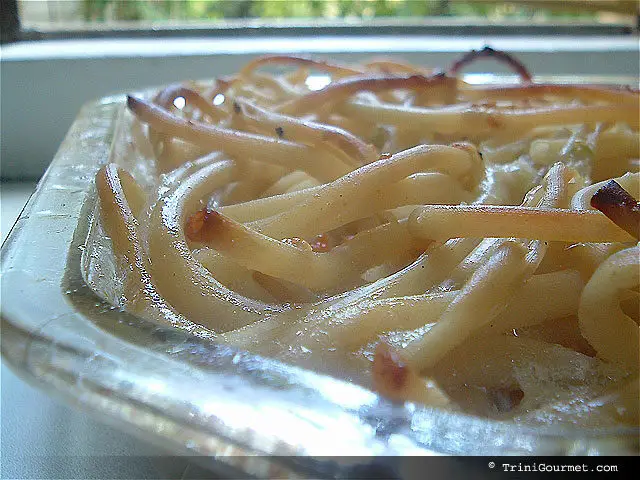Trinidad and Tobago Carnival: Part 3 – Steelbands and Panorama

It seems that every time a North American program wants to denote the ‘tropics’ you will hear the sound of a steelpan. It doesn’t even to seem to matter if the ‘tropics’ are in the Caribbean on a cruise ship or in Hawaii! If you ask someone from those parts of the world what instrument they are hearing you may even hear them say ‘steel drums’ … oh my my my.. It is time for some Steel pan 101. A Pan-o-vention if you will 😉
The steel pan (not drum) was invented in Trinidad and is the only acoustic musical invention of the 20th century. It should then come as no surprise that it is our national instrument and one that we hold dear!
As a kid I played in my prep school’s steelband, I started on the cello and moved up to the tenor where I stayed until I left there to enter high school. Oh the memories 😀

Steelband – The Beginnings
“Pan as an item was not invented by any person. It evolved and there are a number of people, including myself, who advanced it through certain stages of that evolution.” (Elliott Mannette, October 25, 2000)Between 1838 and 1883, the beating of skin drums was an integral part of Carnival celebrations. When a ban on all drum-beating was imposed in 1884, Carnival celebrants had to look for an alternative to the skin drum. They turned to bamboo after they discovered that dried bamboo of various diameters produced different sounds, when cut to differing lengths and struck with wooden sticks. Bands that used bamboo to produce music were called Tamboo Bamboo bands and the first report of such a band taking part in Carnival was in 1891. With the passage of time, Tamboo Bamboo bands were integrated into Carnival and flourished until the 1930s.
With an innate sense of rhythm and a burning desire to express this feeling by beating on something other than bamboo and skin drums during Carnival, some poor, Black, skillful Trinidadians turned to metal containers for music in the 1930s. Although there are varying opinions as to when the first sound from beating on metal cans was heard, there is strong evidence that such a sound occurred in 1935 when the Gonzales (Port-of-Spain) Tamboo Bamboo Band hit the road during Carnival with a bass can. As word of this innovation spread, aspiring metal can players all over Trinidad began crafting the bottoms of any metal containers (pans) that they could put their hands on, by pounding and partitioning the flat ends with hammers and steel punches to create different sounds. This art would later come to be known as tuning and the players were called panmen. By 1937, paint cans and cookie tin-cans were being played alongside Tamboo Bamboo bands during Carnival. In 1938, Victor “Toti” Wilson of the Calvary Tamboo Bamboo Band played a paint pan that had four notes tuned to the chimes of the clock at Queen’s Royal College. By 1939, bands comprised of pans only began to form and were called steelbands. They initially took on names from popular American movies and the first two steelbands in the history of Trinidad were Alexander’s Ragtime Band and Hellyard. In 1940, calypso music and the steelband began their long marriage when the Roaring Lion composed a calypso specifically for Alexander’s Ragtime Band.
.
Read more about ‘Steelband – The Beginning‘
From Wikipedia.org’s Steelpan entry
.
There are 11 instruments in the pan family:
.
* Lead/Tenor (There are many variations of tenor pans: Spiderweb lead( 4ths and 5ths), 3rds and 5ths, left handed, etc…)
* Invader lead/Tenor (Variations include C and D invaders)
* Double tenors
* Double seconds
* Double guitars
* Quadduet (double seconds with extensions)
* Quadrophonic (four pans)
* Triple guitars
* Cellos (Three and four pan variations)
* Tenor bass (Three and four pan variations)
* Five bass
* Six bass
* Seven bass
* Nine bass (up to 12 bass)
Just like an orchestra, these different types of pans combine to form ‘bands’. Steelbands.
Once a year the various steelbands (often with corporate sponsors) compete at Carnival time in a festival called Panorama.
Silver Stars -Battle Zone (winning Panorama performance 2010) – The only word for this is “WOW”
One of the things that never fails to amaze me is the sheer passion and dedication of the panplayers who volunteer countless hours, memorizing 20 to 30 minute arrangements without the aid of sheet music, formal training (for the most part) or the visual metronome of a conductor.
Trinis are really amazing! 😀
SIGHTS:
Trinidad and Tobago Steelpan and Panorama Links:
• Pan Trinbago: The World Governing Body for the steelpan
• Steelpan – National Instrument of Trinidad and Tobago (directory of links)
SOUNDS:
BP Renegades on the streets of the Queen’s Park Savannah, Carnival Tuesday 2014.
TASTES:

Macaroni Pie, a Trinidad Creole favorite, is one of the most sought after search terms on TriniGourmet.
You can view the recipe here
[random_content group_id=”114″]

